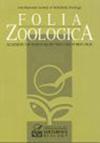食用睡鼠(Glis Glis)到冬眠地点的移动及其对种群控制的影响
Q2 Agricultural and Biological Sciences
引用次数: 2
摘要
摘要在英格兰南部一片100公顷的树林里,科学家们通过检查230个巢箱组成的网络,每隔25米对一种野生食用睡鼠(Glis Glis)进行了监测。个体在幼年或成年时被植入微芯片,以确定其一生中的各种参数。来自微芯片记录的证据表明,在它们已知的生命周期中,大多数个体在夏季被记录在一个或很少几个相邻的巢箱中——即使是10岁以上的个体。在2009年至2016年的大部分时间里,无线电项圈在秋季被安装在一小部分携带微芯片的成年人身上。如果可能的话,定期使用无线电遥测技术来确定它们冬季冬眠的确切位置。从已知的巢箱到巢箱的距离和方向变化很大。一些冬眠动物的个体也被成功地挖掘出来,以提供进一步的信息。这些数据在准备控制行动的背景下进行分析和讨论,其中Glis是房屋或森林中的害虫。本文章由计算机程序翻译,如有差异,请以英文原文为准。
Movements by edible dormice (Glis glis) to their hibernation site and implications for population control
Abstract. A feral population of edible dormice (Glis glis) has been monitored by examining a network of 230 nest boxes placed ca. 25 m apart within a 100 ha wood in southern England. Individuals have been microchipped as juveniles or adults to subsequently determine various parameters during their lifetime. Evidence from microchipping records indicated that most individuals were recorded in summer in one or very few adjacent nest boxes during their known lifespan – even for individuals recorded over ten years old. During most years between 2009 to 2016 radio collars were fitted in the autumn to a small sample of microchipped adult individuals. These adults were located periodically if possible using radio telemetry to determine the exact location of their winter hibernaculum. The distances and direction from the known nest boxes used were very variable. Some individual hibernacula were also successfully excavated to provide further information. The data are analysed and discussed in the context of preparing control operations where Glis are a pest in houses or woods.
求助全文
通过发布文献求助,成功后即可免费获取论文全文。
去求助
来源期刊

Folia Zoologica
生物-动物学
CiteScore
1.70
自引率
0.00%
发文量
0
审稿时长
3 months
期刊介绍:
Information not localized
 求助内容:
求助内容: 应助结果提醒方式:
应助结果提醒方式:


